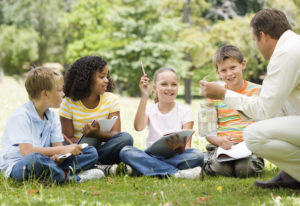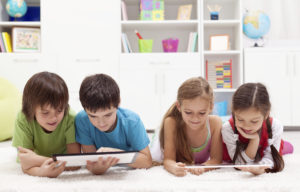 Matthew Friday of Dresden International School tells IB World why using narrative-led teaching to explore issues such as global warming can be truly memorable for students
Matthew Friday of Dresden International School tells IB World why using narrative-led teaching to explore issues such as global warming can be truly memorable for students
Storytelling possesses a natural power, especially when it comes to addressing multifaceted topics such as environmental science, says Matthew Friday, Grade Four Teacher and resident storyteller at Dresden International School, Germany.
“The age-old way to hook anybody is through narrative with relatable stories and images to create wonder and awe,” he says. “Telling the story of our planet and its current situation can be done through folktales about the relationship between humans and nature, all the way to the honest facts about what is happening now.”
If we don’t tell the story of how the planet is changing, students won’t know about it.
Inspiring students for their future
The colossal threat that climate change poses needs more attention in the classroom, believes Friday. By ensuring curriculums include environmental science, students are more likely to have the knowledge they need to make a difference and influence others.
“Today’s students will be the next directors of advertising firms, world leaders and scientists, and, armed with the right information, they can make a huge difference to the world,” he says.
Although there is a movement in Ontario, Canada, to place environmental sciences at the top of the curriculum agenda and encourage students to form a guardianship of the planet, the rest of the world is not following suit, says Friday.
However, he understands why it doesn’t always take top priority. “Teachers don’t always have the time to do the things they need to – we’re often very busy, which means we’re simply treading water over issues like global warming,” he says.
Teaching through storytelling is a great place to start, he says. “It can encourage students to become more enthusiastic about learning, and it can enhance the sense of community and collaboration in the classroom.”
Taking action
The benefits of storytelling are endless, according to Friday. “It inspires purposeful talking – not just about the story but also there are many games you can play – it raises the enthusiasm for reading, initiates writing, improves listening skills and gives a motivating reason for English Language Learners to want to talk and write in English, to name a few reasons,” he says.
Narrative can also encourage students to take action where necessary. For example, Friday’s class recently completed a unit about where their clothes come from and how different materials are made. Following the lesson, students came up with ideas of what could be done to combat issues such as slave labor.
He explains: “If you have a good narrative and the resources to tell it, students will be more interested in finding out about what you teach, and tend to come up with great ideas for action,” he says.
Friday says students may be inspired to raise money and awareness for charities protecting endangered species, for example.
However, Friday says it’s important that the story continues to make a difference to the world long after the lesson.
Storytelling is the most primeval way to understand the world, but when the story ends it’s the ‘so what?’ Using narrative to teach students about the environment encourages them to do something long-term about the issues they learn about.
Storytelling is an effective form of teaching and climate change is a huge threat to the world, so students can truly benefit when teachers combine the two – but inspiring and informative stories need to be the foundation, says Friday. “When you tell your first story to students, there is a truly magical moment when they sit enthralled, mouths opened and eyes wide open,” he says.


